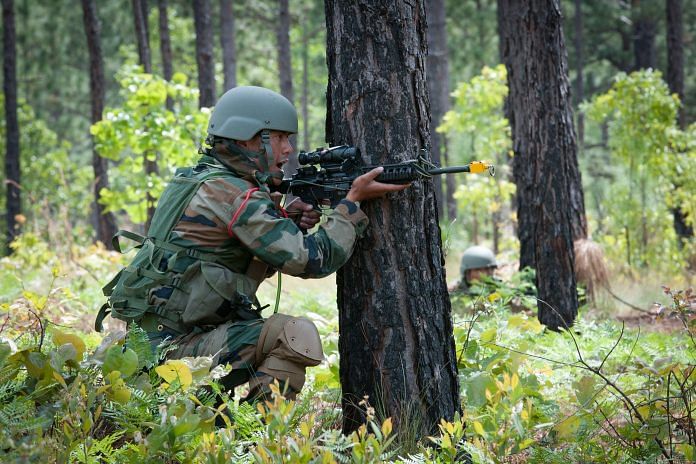In the first of a two part series on ammunition shortages in the army, Gautam Moorthy and Syed Ata Hasain write that governments in the past appeared to believe the threat of conventional war to be negligible enough not to warrant even making up of deficiencies, let alone a sustained build-up. Read the second part.
Gautam Moorthy & Syed Ata Hasnain
Two major heart-warming decisions by the government: the first came before the Doklam standoff and the second even as the Chinese continue to blow hot and hot with intimidation, threats and rhetoric.
The Army has been delegated special financial powers by the government to make up its critical deficiencies in ammunition and spares. This was received with much satisfaction among those whose responsibility it is to ensure that the fighting troops get the wherewithal to implement the military goals set out for them.
Setting a figure of Rs 40,000 crores for this is not a small sum even though making up critical deficiencies may need much more. Then the Ministry of Defence (MoD) demanded an additional of Rs 20,000 crores, presumably for the current annual defence budget for the purpose of once again making up deficiencies in ammunition and spares. The latter presumption is a fair one considering that acquiring weapon systems at this stage to meet the Chinese threat may be too little, too late.
Some have even put a number on it: about Rs 98,000 crores if we wish to make up ammunition for the 40 day-reserves by 2019.
Governments in the past appeared to believe the threat of conventional war to be either non-existent or negligible enough not to warrant even making up of deficiencies, let alone a sustained build-up. Or perhaps the view was that we have lived with the deficiency for many years and could do so for some more, in the absence of ‘real threats’. The real threat seems to be upon us now and the procedure to release and delegate additional funds has been in progress for the last few months.
The current government has fathomed the seriousness of the issue and has moved to empower the Vice Chief of the Army Staff (VCOAS) to move ahead without the Army having to look over its shoulder. It is a critical decision for the Army whose current holdings of major war fighting equipment cannot be effectively brought to bear on the enemy and would be rendered ineffective in the absence of critical spares and ammunition.
So what has actually been done? First of all, and perhaps a case of better late than never, the government has finally accepted the inability of the ordnance factories to meet the annual targets set by the army, targets that the factories themselves agree to. Ten separate contracts in respect of various ammunition items have been signed under the delegated financial powers of the VCOAS.
To diversify the supply chain, the army is procuring ammunition from private industry as well as public sector undertakings (PSUs), a domain that was entirely of the Ordnance Factory Board (OFB) until now. It is also in keeping with the Make in India philosophy. ‘Requests For Proposals’ for various types of ammunition items, 22 in all, have been issued to Indian companies for the first time in history since Independence. Invitation of
bids have been asked for supplying yearly quantities, for a contractual period of ten years under ‘Manufacture of Ammunition for Indian Army by Indian Industry’ initiative.
Full powers have to be given to the Army HQ to procure operationally critical ammunition and spare parts. Additional steps include monitoring of delivery to the Army by the manufacturers by fixing numerical targets instead of financial targets, strict budgetary controls, an eagle eye focus on quality and an increase in storage capacities.
Critical equipment, ammunition and spares have to be put in the hands of the fighting formations early enough, perhaps as early as to empower and enable our formations not to be deterred by the bellicose Chinese threats and propaganda.
Consequent to the devastating fire that took place last year in the ammunition depot at Pulgaon near Nagpur that killed 19 people, the MoD, has approved a procedure for disposal of dangerous ammunition and regularisation of losses for defective ammunition to bring in accountability in the functioning of ammunition factories that are under the OFB, which till now were not held accountable. However, much remains to be done on the major issue of quality checks during manufacturing.
Lt. Gen. Syed Ata Hasnain (Retd), a former GOC of Srinagar-based 15 Corps, is associated with the Vivekanand International Foundation and the Institute of Peace and Conflict Studies. Twitter: @atahasnain53
Lt Gen Gautam Moorthy, former DG Ordnance Services, is now a part of the
Armed Forces Tribunal at Kolkata. Twitter: @GautamMoorthy




At last any government has been wise enough to realize the critical importance of sufficiant ammunition and other ancillaries and delegated enough financial powers to services.Hats off to the present government